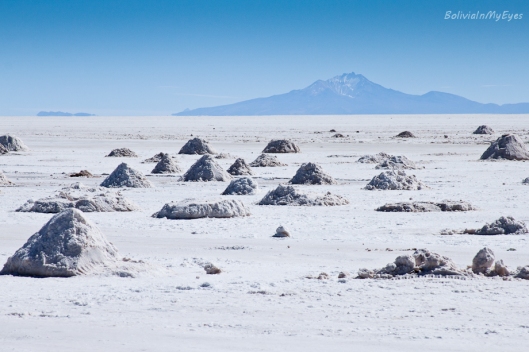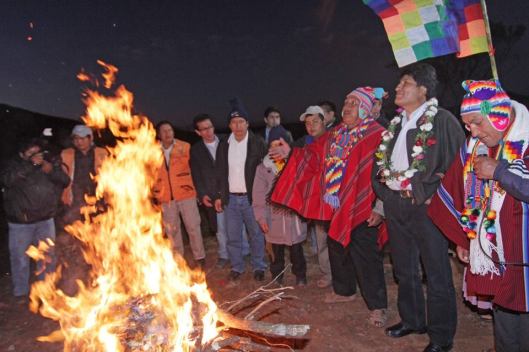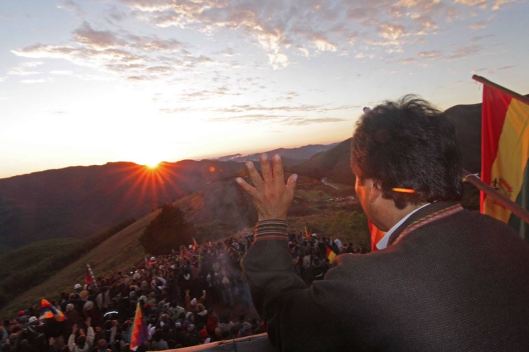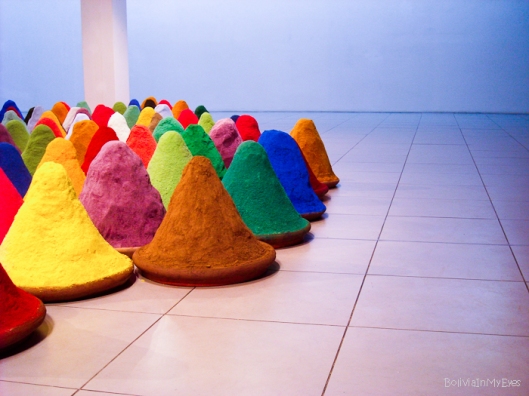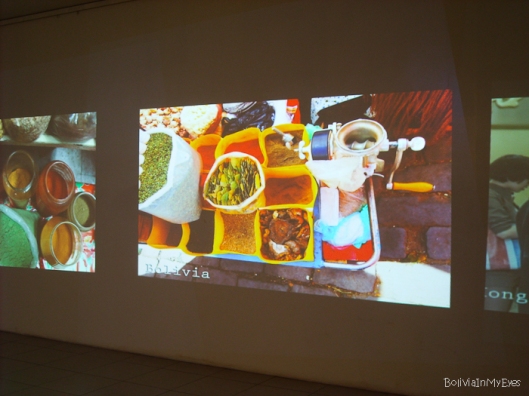Wrzesień uważany jest za najpiękniejszy miesiąc w Boliwii. Dlaczego? Powodów jest kilka, ale najważniejszy to początek wiosny! Na zachodzie robi się cieplej i wilgotniej a na wschodzie upalnie i sucho:)
Wraz z początkiem września temperatury w Santa Cruz de la Sierra zaczynają przekraczać 30 stopni Celsjusza, wilgotność powietrza spada poniżej 50 % (hura! można robić pranie i myc podłogi!), a zimne wiatry znad argentyńskiej pampy wieja krócej i robią się cieplejsze.
Wszystko wokół rozkwita – czas na żółte tajibos oraz orchidee, które na dziko można podziwiać np. w Parku Amboro lub w bardziej sztucznym parku wodnym Guembe. Dla nas wrzesień oznacza również powrót do pływania w basenie i ciągłe potyczki z administracja o jego czyszczenie;)
 Wrzesień w Boliwii celebrowany jest szczególnie w Cochabambie, która 14 obchodzi swój dzień oraz w Santa Cruz, która świętuje swoje powstanie 24. Przez cały miesiąc w mieście powiewają zielono-białe flagi oraz organizowane są niezliczone koncerty i inne imprezy.
Wrzesień w Boliwii celebrowany jest szczególnie w Cochabambie, która 14 obchodzi swój dzień oraz w Santa Cruz, która świętuje swoje powstanie 24. Przez cały miesiąc w mieście powiewają zielono-białe flagi oraz organizowane są niezliczone koncerty i inne imprezy.
Jedna z nich jest FestiJazz – międzynarodowy festiwal odbywający się na terenie całego kraju. My mieliśmy okazje wysłuchać koncertu niemiecko – indyjskiego tria Eastern Flowers, zorganizowanego przez Goethe Zentrum. Artyści zachwycili, ale organizacja okazała się taka typowo boliwijska: koncert odbył się z 40 minutowym opóźnieniem, a publiczność wraz z artystami gotowała się przez godzinę i pol w zamkniętej sali, siedząc na niewygodnych krzesłach. Nie wiedzieć czemu, niemieccy organizatorzy postanowili wyłączyć klimatyzacje tuz przed koncertem.
 Mila niespodzianka okazał się natomiast koncert orkiestry kameralnej uniwersytetu UAGRAM w Museo de Historia, której przewodził Jiri Sommer – skrzypek rodem z Pragi. Koncert odbył się z jedynie 10-minutowym poślizgiem, kosztował jedyne 30 bs. i zagwarantował nam niezwykle przeżycia dźwiękowo-wizualne. Z przyjemnością wysłuchaliśmy bardzo dobrego wykonania otworów mistrzów klasycznych oraz współczesnych, siedząc na pięknym otwartym dziedzińcu wiekowej budowli. Brawa dla organizatorów i wykonawców! Szkoda tylko, ze nikt nie przypomniał publiczności o wyłączeniu telefonów i nierobieniu zdjęć co minute (ja robiłam w przerwie wyciszona komórką;)
Mila niespodzianka okazał się natomiast koncert orkiestry kameralnej uniwersytetu UAGRAM w Museo de Historia, której przewodził Jiri Sommer – skrzypek rodem z Pragi. Koncert odbył się z jedynie 10-minutowym poślizgiem, kosztował jedyne 30 bs. i zagwarantował nam niezwykle przeżycia dźwiękowo-wizualne. Z przyjemnością wysłuchaliśmy bardzo dobrego wykonania otworów mistrzów klasycznych oraz współczesnych, siedząc na pięknym otwartym dziedzińcu wiekowej budowli. Brawa dla organizatorów i wykonawców! Szkoda tylko, ze nikt nie przypomniał publiczności o wyłączeniu telefonów i nierobieniu zdjęć co minute (ja robiłam w przerwie wyciszona komórką;)
 We wrześniu w całym kraju odbywa się tez Dia del Peaton (tym razem wypadło na niedziele 7-ego), którą my spędziliśmy w Cochabambie.
We wrześniu w całym kraju odbywa się tez Dia del Peaton (tym razem wypadło na niedziele 7-ego), którą my spędziliśmy w Cochabambie.
Wrzesień to również miesiąc wielkiej Feria Internacional de Santa Cruz, czyli expo, przyciągającego do wschodniej stolicy Boliwii tysiące ludzi z kraju i ze świata- wystawców, konsumentów, zwykłych ciekawskich oraz tych, których interesują jedynie piękne hostessy. Tak nam te ferie zachwalają, ze chyba się w tym roku wybierzemy -jako zwykli ciekawscy, choć raczej nie wydaje mi się by było inaczej niż dwa lata temu w Cochabambie.
No i w końcu, wrzesień to czas wyprzedaży i upustów nas najbardziej interesujących czyli tych kulinarnych. Jakby stok był przejazdem w Santa Cruz, to warto jest wpaść na lody o smaku ferrero rocher (zwane Temporada) do lodziarni kolo katedry zwanej smakowicie ‘En el nombre del postre‘ – 2 w cenie 1 (od 12 bs.).
A przy okazji promocji, muszę podzielić się smutna wiadomością: nasza ulubiona kawiarnia ‘Mosaico‘ nad kinem, z tarasem i widokiem na główny plac i katedrę oraz drinkami 2 w cenie 1, została zamknięta na początku miesiąca. Wrzesień będzie wiec kojarzył nam się również z ta przykra sytuacja i jej następstwami…
***
Why September is the best month in Bolivia? There are several reasons, but the main one is the beginning of spring! The weather in the west is getting warmer and wetter and in the east – hot and dry :)
With the beginning of September the temperature in Santa Cruz de la Sierra transgress 30 degrees Celsius, the air humidity drops below 50% (hooray! I can do the laundry and wash the floors!), and cold winds from the Argentine papmas blow less and warmer air.
Everything around flourishes – September it’s a time for yellow Tajibos and Orhidees, which you can see in the wild in the Amboro Park or more artificial water park Guembe. In September we also go back to smimming and arguing with the building administration over cleaning the pool:)
September is a month of celebrations in Bolivia, especially in Cochabamba, which celebrates it’s day on 14th and in Santa Cruz, which commemorates it’s foundation on 24th. For the entire month in the Cruceno capital, the green-white flags are waving from every building and countless concerts and other events are organised.
One of them is FestiJazz – an international festival taking place across the country. We had a chance to listen to the concert of German – Indian trio, Eastern Flowers, organized by the Goethe Zentrum. The music was great, but the organization turned out to be a typical Bolivian as the concert was delayed by 40 minutes and the audience together with artists simmered for an hour and a half in a closed room, sitting on the uncomfortable chairs. I do not know why German organizers decided to switch off the air conditioning just before the concert?
However, the day before we were pleasantly surprised by another concert of university orchestra UAGRAM at the Museum of History, led by Jiri Sommer – violinist born in Prague. The concert started only a 10-minutes late, the tickets cost only 30 bs. and it guaranteed us an amazing experience. The performance of young musicians was very good and it was a real pleasure to listen to classical and contemporary masters sitting in the open courtyard of the beautiful old buildning. Bravo for the organizers and performers! Just, it is a pity that no one reminded the audience to switch off their phones and not to take pictures every minute (I was taking mine with muted cell phone;)
In September we also enjoy Dia del Peaton that takes place across the country (this year it fell on Sunday the 7th), which we spent in Cochabamba.
In the middle of September the big Feria Internacional de Santa Cruz, or expo, is being organised, attracting thousands of visitors from Bolivia and around the world to the eastern capital – exhibitors, consumers, ordinary curious people and those who just want to look at the beautiful hostesses. I think we will go and see it for the first time, as ordinary curious people, however I doubt it will be very different that the one we visited in Cochabamba two years ago.
And last but not least, September is the time of sales and discounts. For those in Santa Cruz, I could recommend stopping by for a delicious ice-cream ferrero rocher (called Temporada) to the ice cream shop nearby cathedral called ‘En el nombre del postre’ – 2 for the price of 1 for only 12 bs!
Unfortunately, this September also brought some sad news to us: our favorite cafe ‘Mosaico‘ by the cinema, with a terrace and view over the square and the cathedral as well as 2 drinks for the price of 1, was closed at the beginning of the month. September will therefore always remind us of this tidings and its somber consequences …

